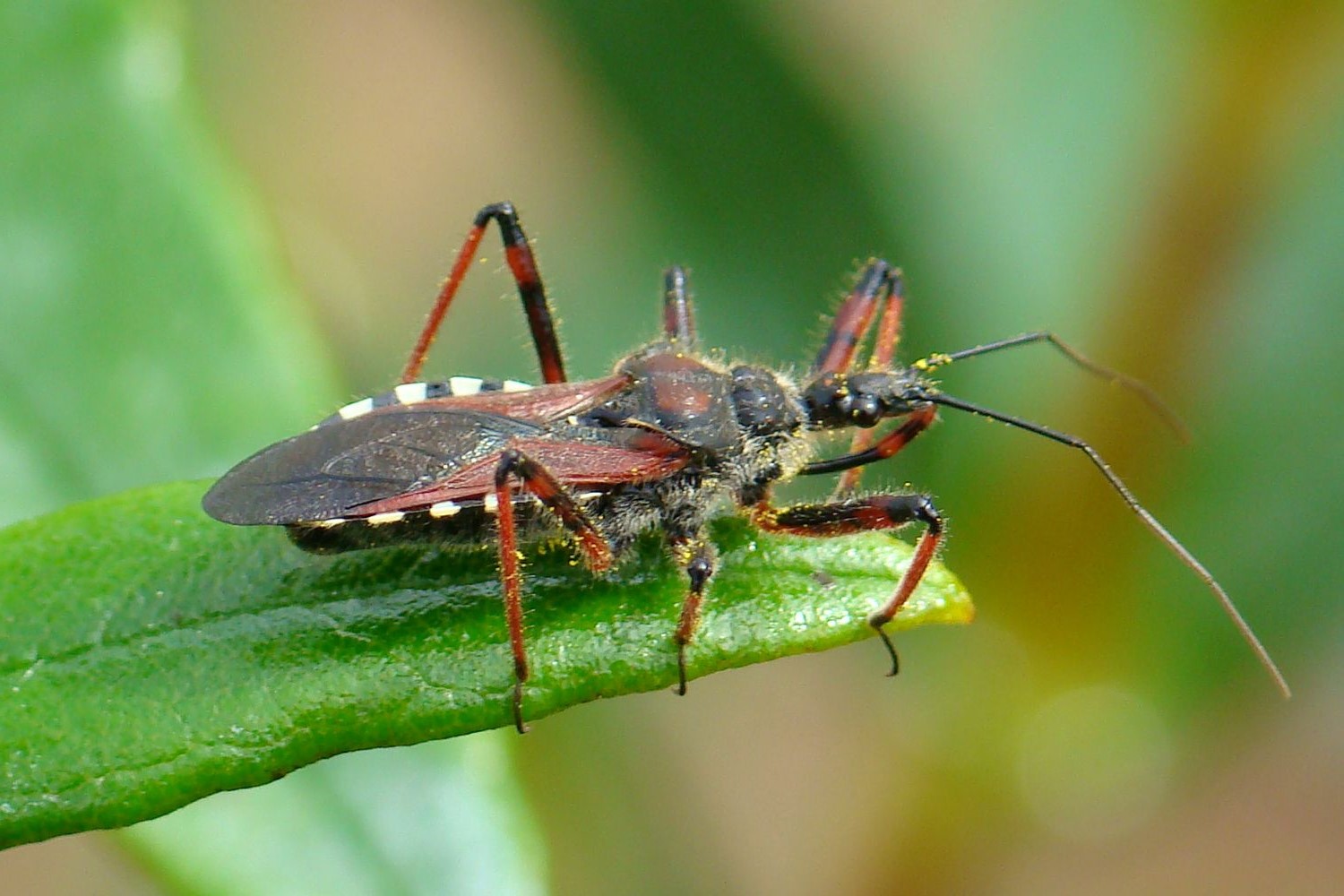
Assassin bugs are fascinating creatures that often go unnoticed in the insect world. These stealthy predators belong to the Reduviidae family and are known for their unique hunting techniques. But what makes them so special? Assassin bugs use a specialized mouthpart called a rostrum to inject lethal saliva into their prey, liquefying the insides for easy consumption. Found in various habitats worldwide, they play a crucial role in controlling pest populations. Whether you're a budding entomologist or just curious about nature, learning about these incredible insects can be both educational and intriguing. Ready to dive into some amazing assassin bug facts? Let's get started!
What Are Assassin Bugs?
Assassin bugs are fascinating insects known for their predatory behavior. They belong to the Reduviidae family and are found worldwide. These bugs have unique characteristics and behaviors that make them stand out in the insect world.
-
Assassin bugs are named for their hunting skills. They use their sharp beak to inject venom into prey, paralyzing and liquefying their insides.
-
There are over 7,000 species of assassin bugs. These species vary in size, color, and habitat, showcasing the diversity within this family.
-
Assassin bugs can be found on every continent except Antarctica. They thrive in various environments, from forests to deserts.
-
They have a distinctive, elongated head. This head shape helps them target and capture prey with precision.
-
Assassin bugs are beneficial to humans. They help control pest populations by preying on insects like aphids and caterpillars.
How Do Assassin Bugs Hunt?
Assassin bugs have developed unique hunting techniques that make them effective predators. Their methods are both fascinating and efficient.
-
They use camouflage to ambush prey. Many species blend into their surroundings, making it easier to surprise their victims.
-
Assassin bugs have a specialized mouthpart called a rostrum. This beak-like structure pierces the prey's body to inject venom.
-
Their venom contains enzymes that liquefy the prey's insides. This allows the assassin bug to suck out the nutrients.
-
Some species use a "sticky trap" method. They secrete a sticky substance on their legs to capture small insects.
-
Assassin bugs can take down prey much larger than themselves. Their potent venom and strong rostrum make this possible.
Interesting Behaviors of Assassin Bugs
Assassin bugs exhibit a range of behaviors that are both intriguing and sometimes alarming. These behaviors help them survive and thrive in their environments.
-
They perform a "dance" before mating. This dance involves waving their antennae and moving their bodies in a rhythmic pattern.
-
Assassin bugs are known for their aggressive nature. They will not hesitate to defend themselves if threatened.
-
Some species exhibit parental care. Female assassin bugs may guard their eggs until they hatch.
-
They can play dead to avoid predators. This behavior, known as thanatosis, helps them escape danger.
-
Assassin bugs communicate through vibrations. They use these vibrations to signal potential mates or warn off rivals.
Unique Adaptations of Assassin Bugs
Assassin bugs have evolved various adaptations that enhance their survival and hunting capabilities. These adaptations are key to their success as predators.
-
They have excellent vision. Their compound eyes allow them to detect movement and locate prey.
-
Assassin bugs can detect heat. Some species use infrared sensors to find warm-blooded prey.
-
Their legs are adapted for grasping. Strong, spiny legs help them hold onto struggling prey.
-
They can produce sounds to deter predators. This stridulation involves rubbing body parts together to create noise.
-
Assassin bugs have a tough exoskeleton. This provides protection against physical damage and predators.
Assassin Bugs and Humans
While assassin bugs are beneficial in controlling pests, they can also pose risks to humans. Understanding their interactions with people is important.
-
Some species can transmit Chagas disease. The kissing bug, a type of assassin bug, spreads this disease through its feces.
-
Assassin bug bites can be painful. Their venom causes a burning sensation and swelling.
-
They are sometimes kept as pets. Enthusiasts appreciate their hunting skills and unique behaviors.
-
Assassin bugs are used in biological control. Farmers release them to reduce pest populations in crops.
-
They can be found in homes. Assassin bugs may enter houses in search of prey or shelter.
Fun Facts About Assassin Bugs
Assassin bugs have many interesting traits and behaviors that make them a subject of fascination for entomologists and nature lovers alike.
-
They can live up to two years. This lifespan is relatively long for insects.
-
Assassin bugs are solitary creatures. They prefer to hunt and live alone, only coming together to mate.
-
They have a unique way of cleaning themselves. After feeding, they use their legs to wipe their rostrum clean.
-
Assassin bugs can swim. Some species are adapted to aquatic environments and can hunt underwater.
-
They have been around for millions of years. Fossil evidence shows that assassin bugs existed during the time of the dinosaurs.
Conservation and Threats
Like many other species, assassin bugs face threats from environmental changes and human activities. Conservation efforts are important to ensure their survival.
-
Habitat loss is a major threat. Deforestation and urbanization reduce the natural habitats of assassin bugs.
-
Pesticides can harm assassin bugs. Chemicals used to kill pests can also affect beneficial insects like assassin bugs.
-
Climate change impacts their distribution. Changes in temperature and weather patterns can alter their habitats and prey availability.
-
Conservation programs help protect them. Efforts to preserve natural habitats and reduce pesticide use benefit assassin bug populations.
Assassin Bugs: Nature's Stealthy Predators
Assassin bugs are fascinating creatures with their stealthy hunting techniques and unique adaptations. These insects, known for their camouflage and deadly precision, play a crucial role in controlling pest populations. With over 7,000 species, they exhibit a wide range of behaviors and habitats, from tropical rainforests to urban gardens. Their ability to inject paralyzing venom into prey makes them effective hunters, while their distinctive proboscis serves as both a weapon and a feeding tool.
Understanding these bugs helps us appreciate the complexity of ecosystems and the importance of biodiversity. Whether you're a budding entomologist or just curious about nature, assassin bugs offer a glimpse into the intricate world of insect predators. Next time you spot one, take a moment to observe its behavior and marvel at its role in the natural world. These stealthy predators truly are nature's own little assassins.
Was this page helpful?
Our commitment to delivering trustworthy and engaging content is at the heart of what we do. Each fact on our site is contributed by real users like you, bringing a wealth of diverse insights and information. To ensure the highest standards of accuracy and reliability, our dedicated editors meticulously review each submission. This process guarantees that the facts we share are not only fascinating but also credible. Trust in our commitment to quality and authenticity as you explore and learn with us.


